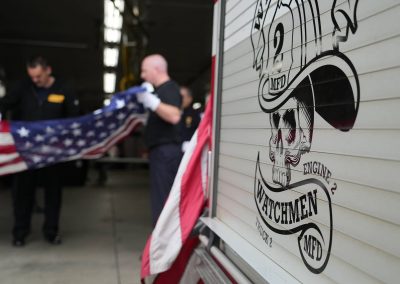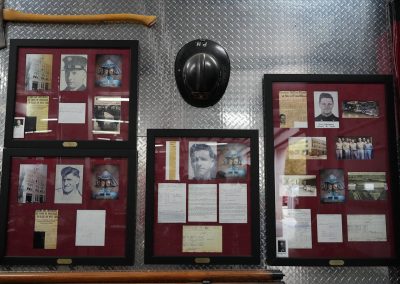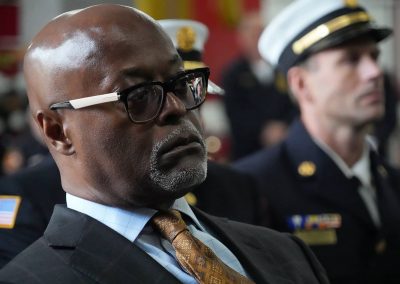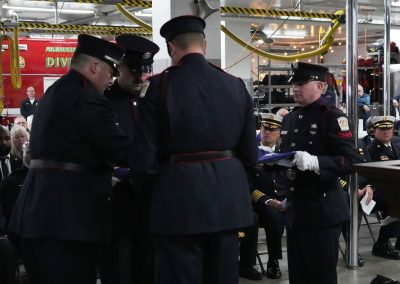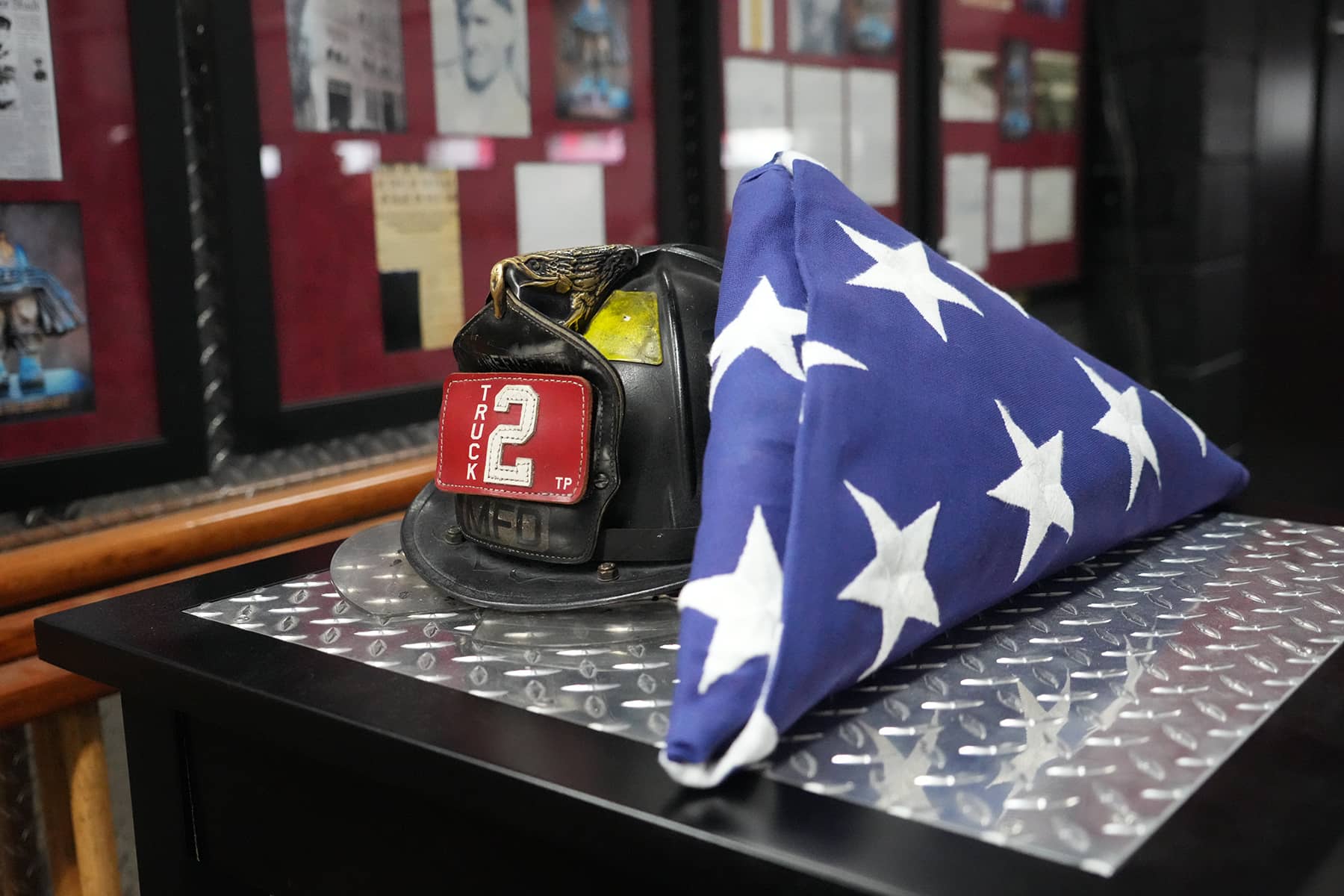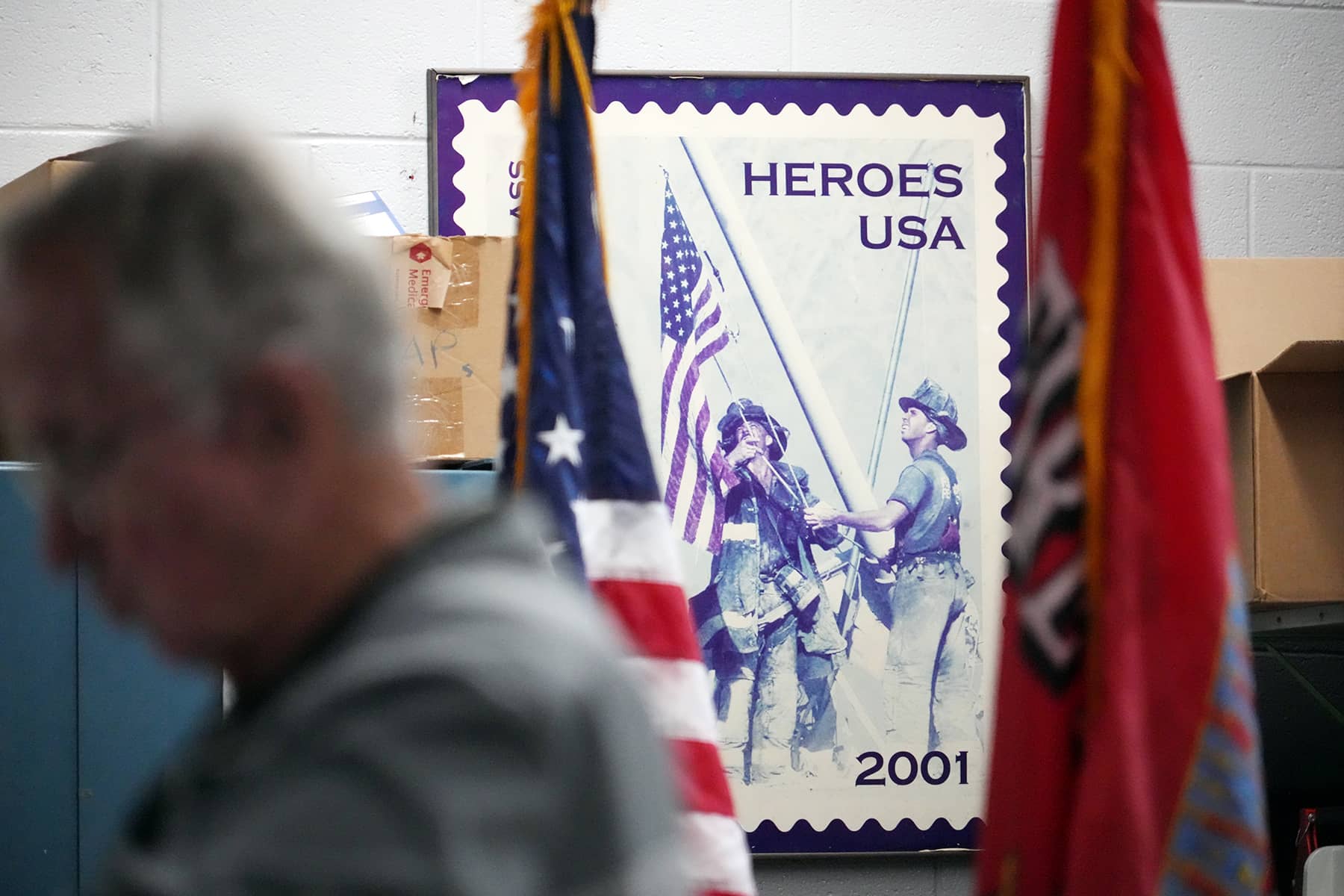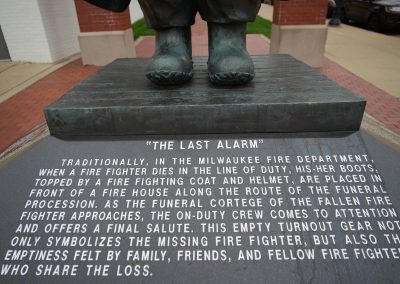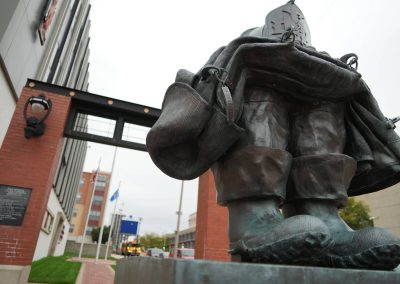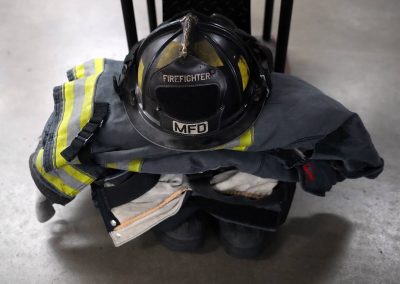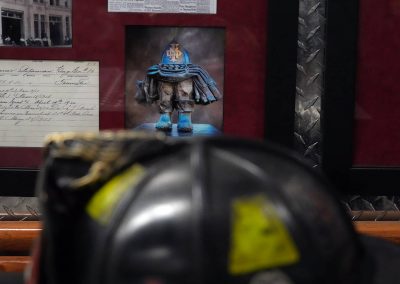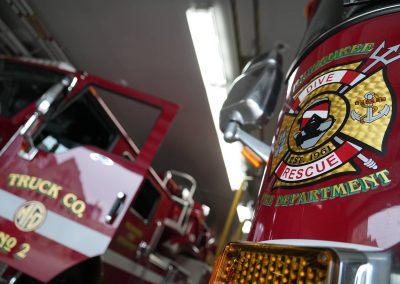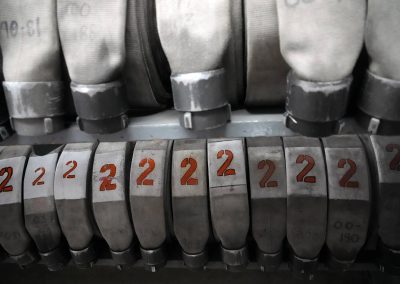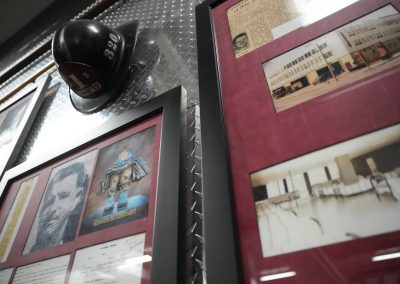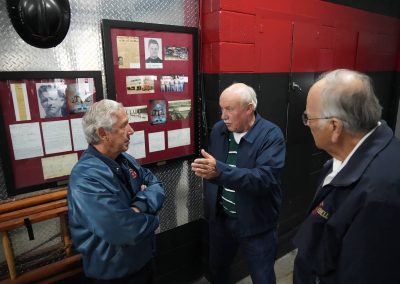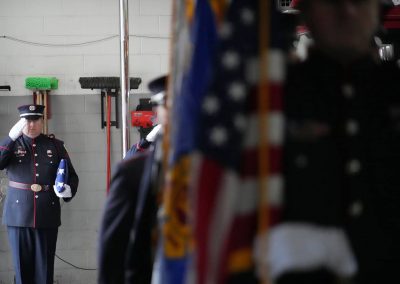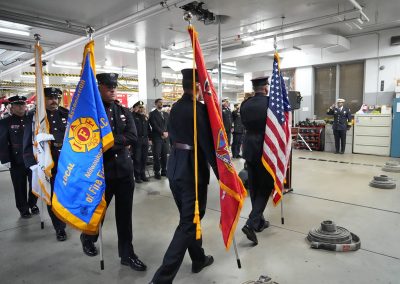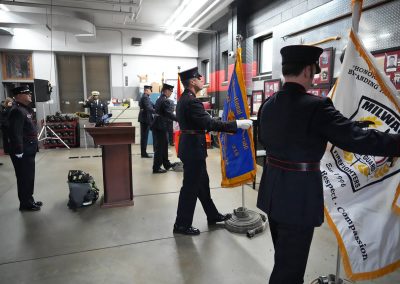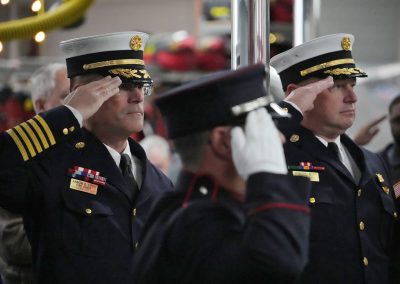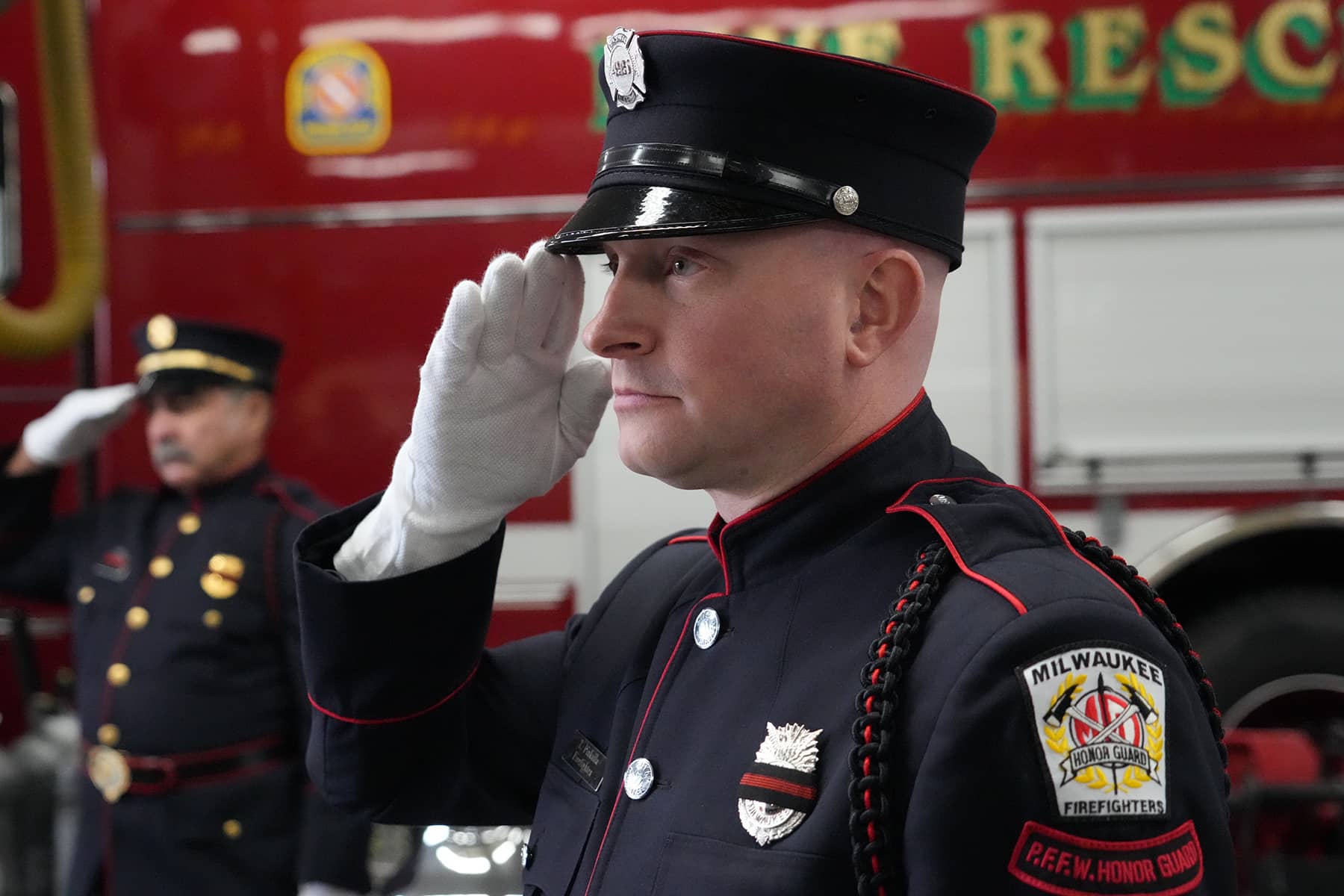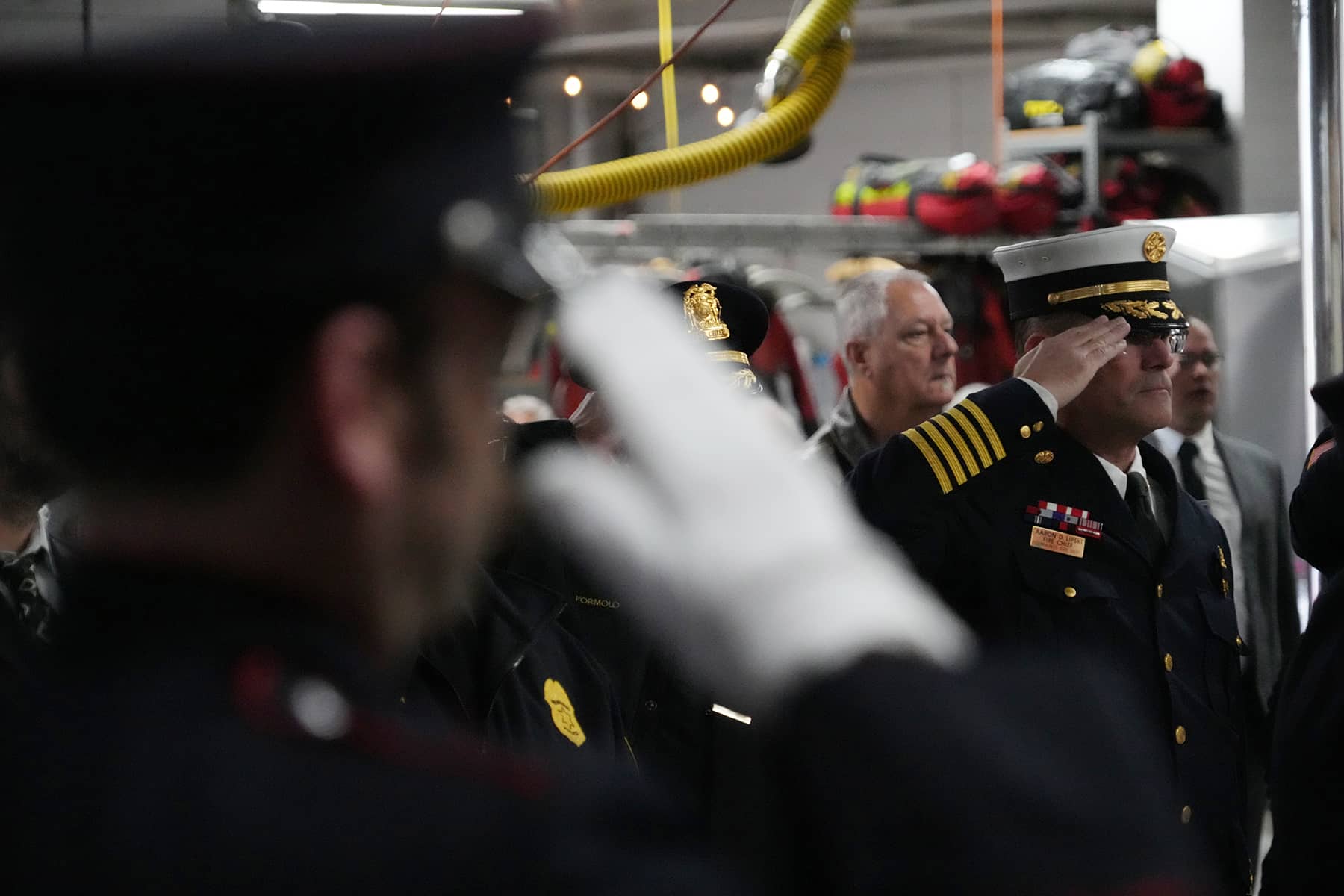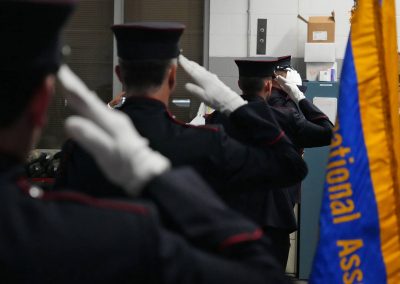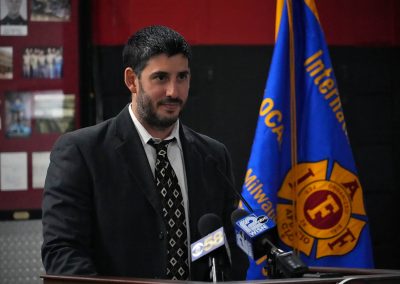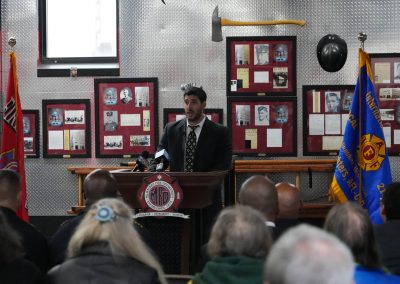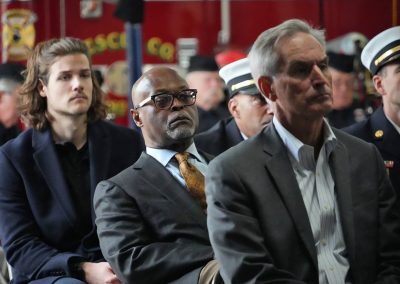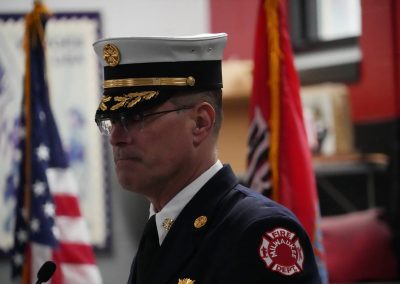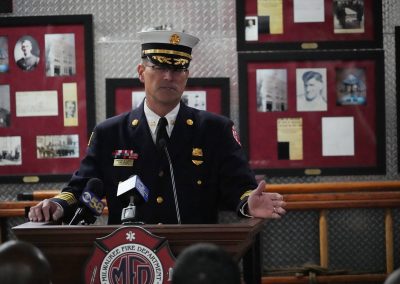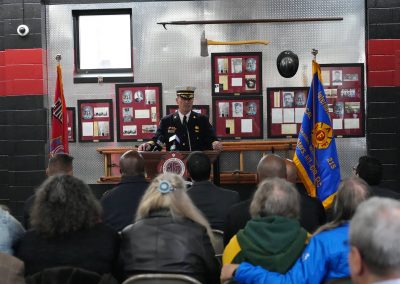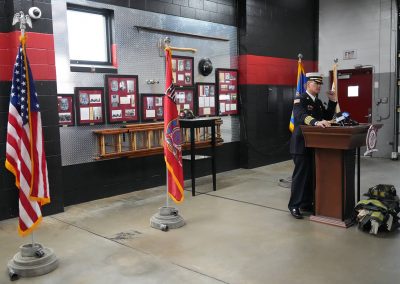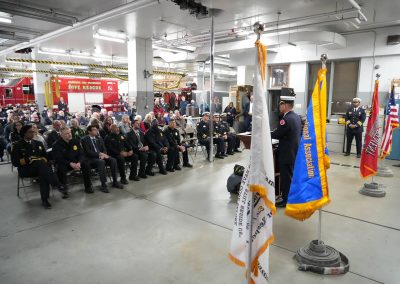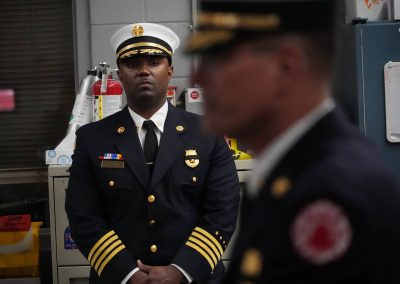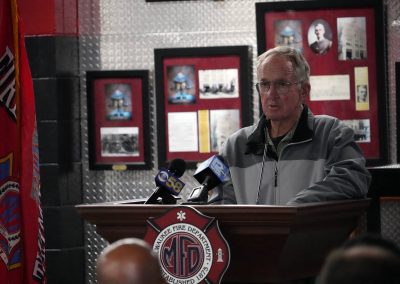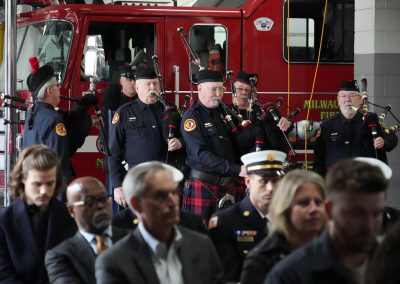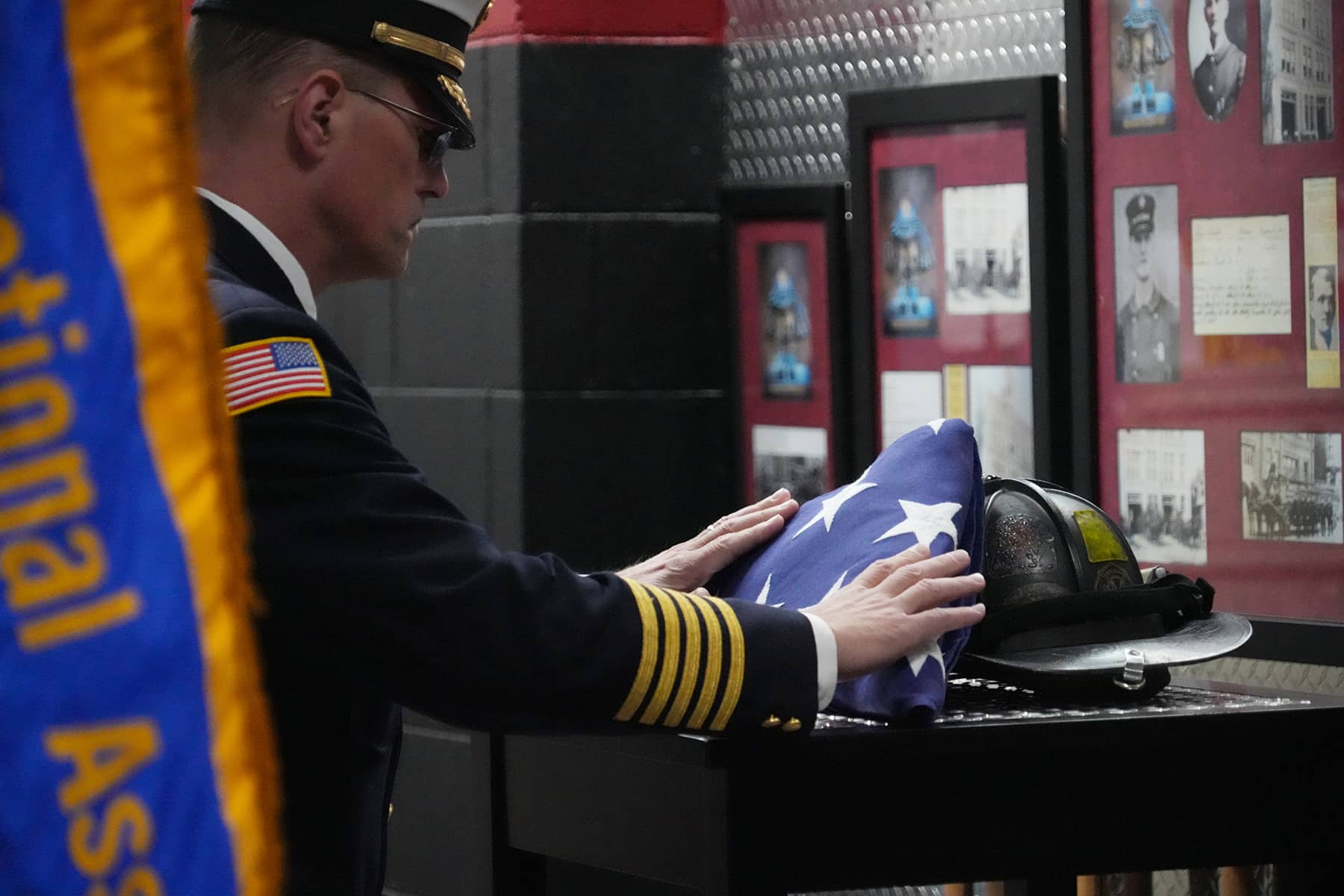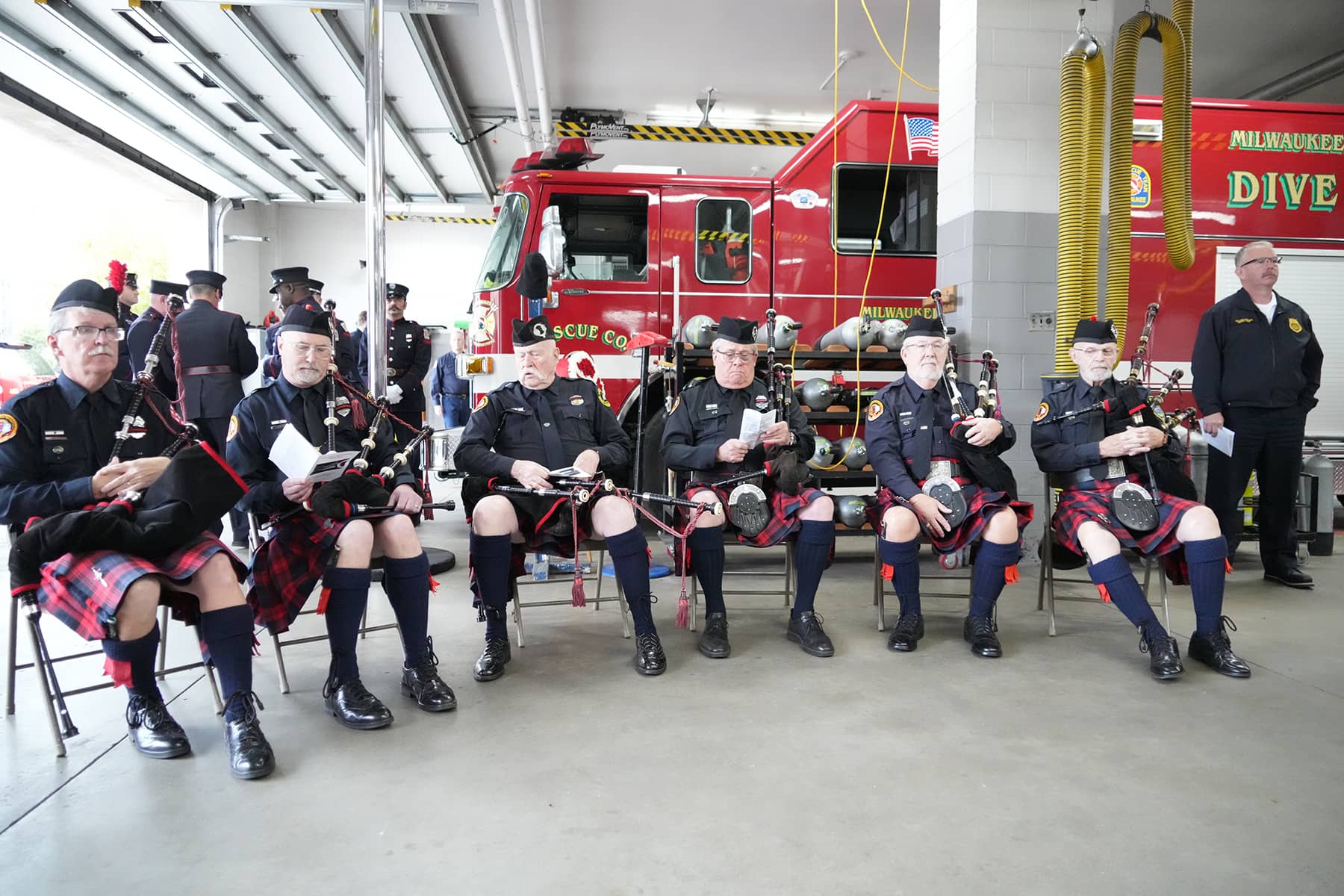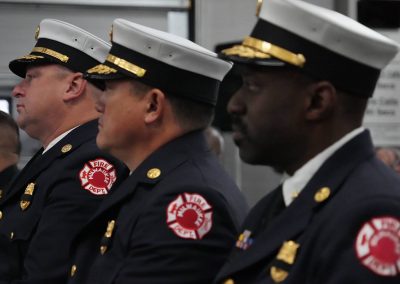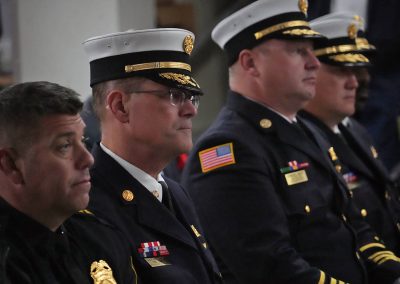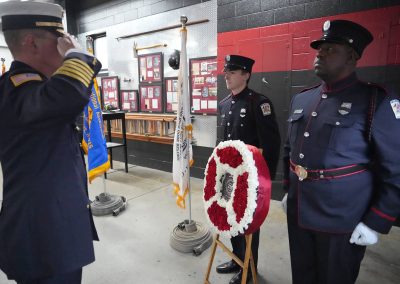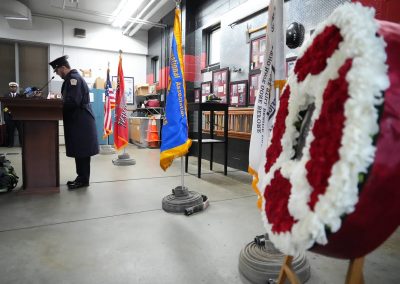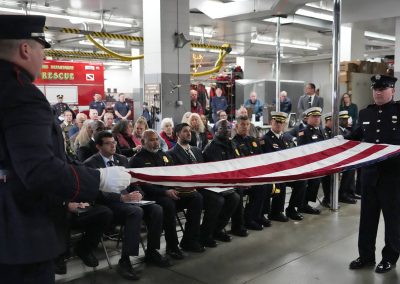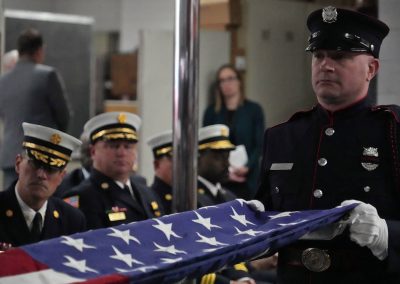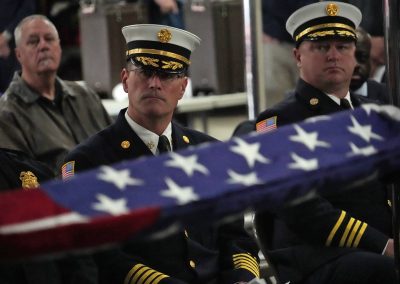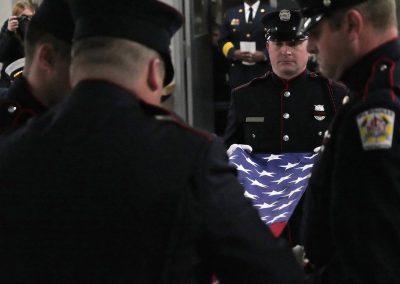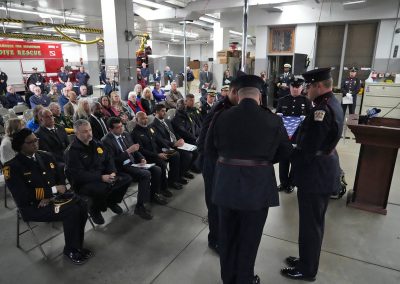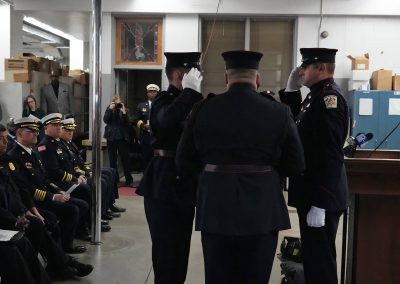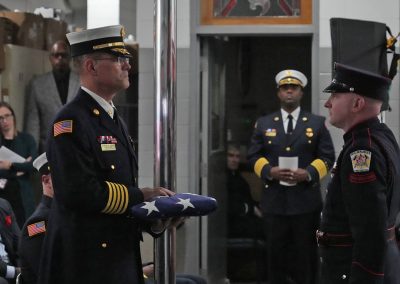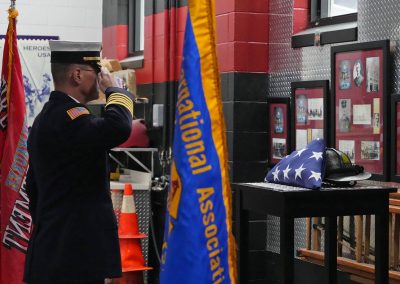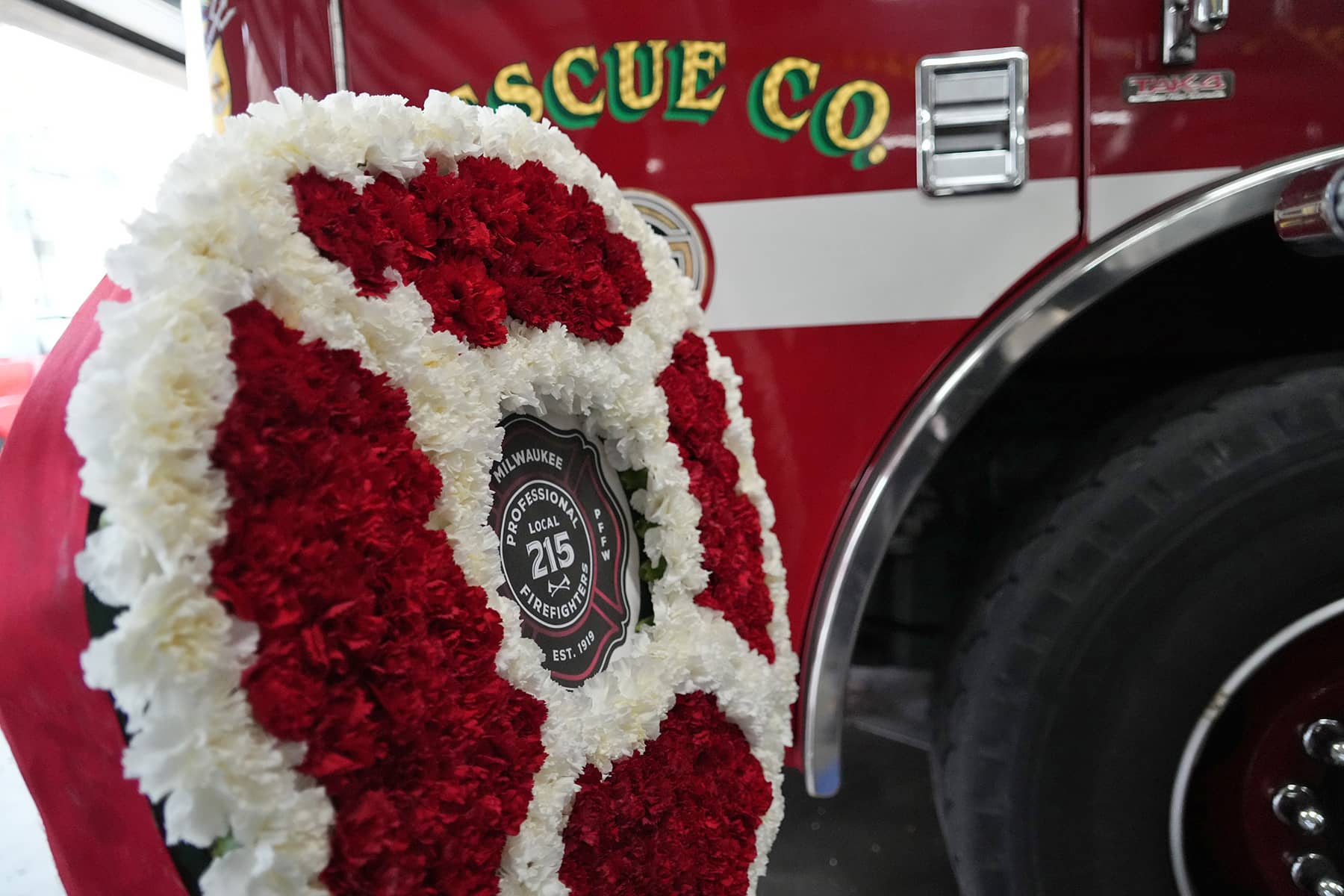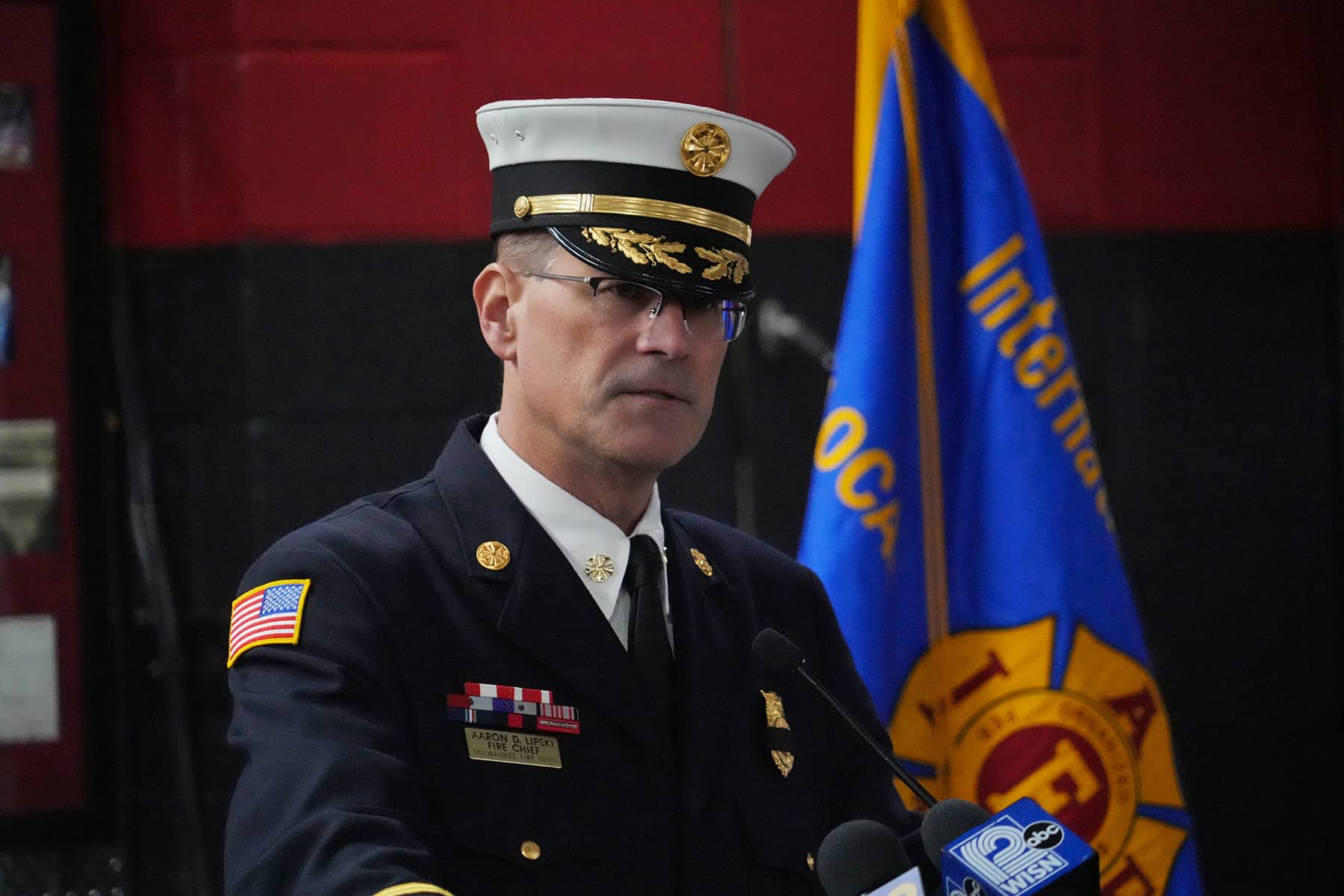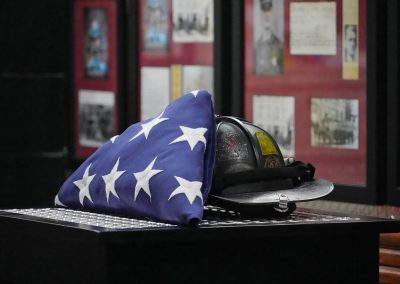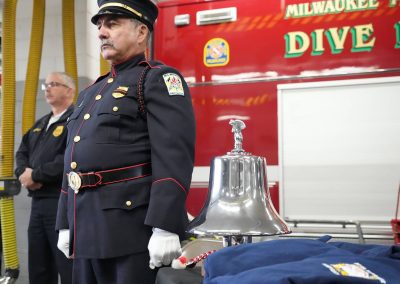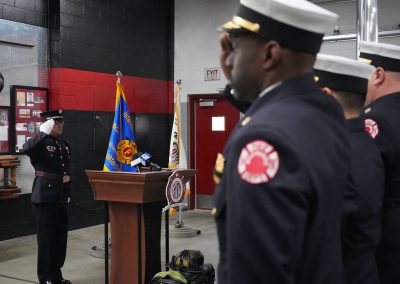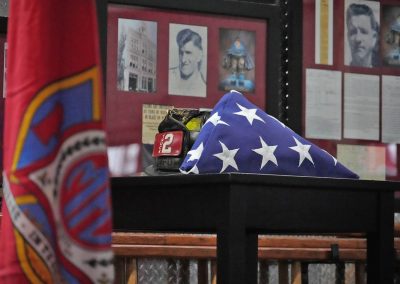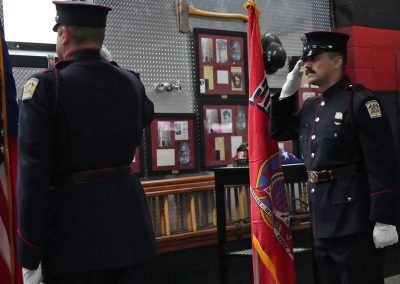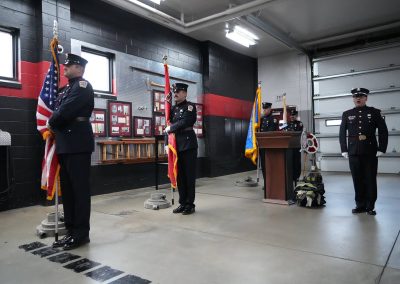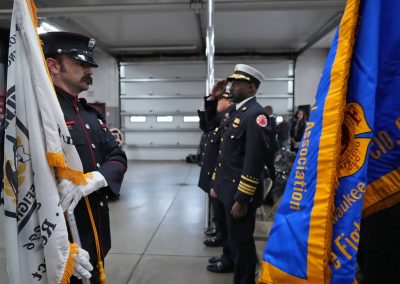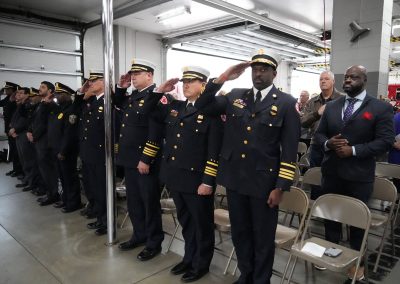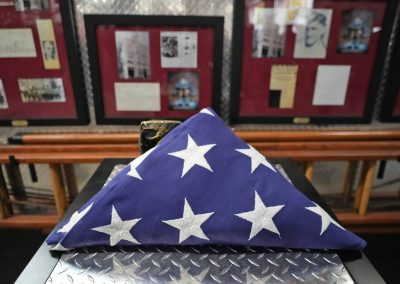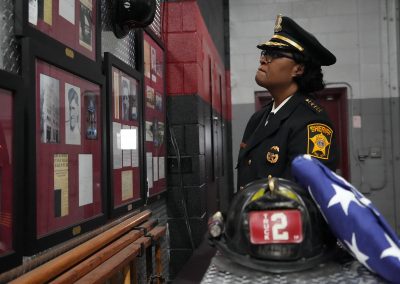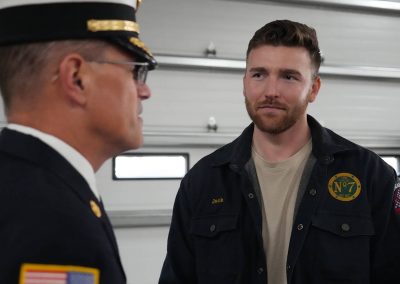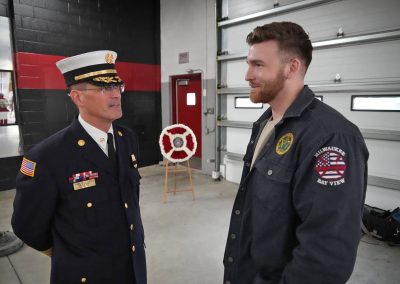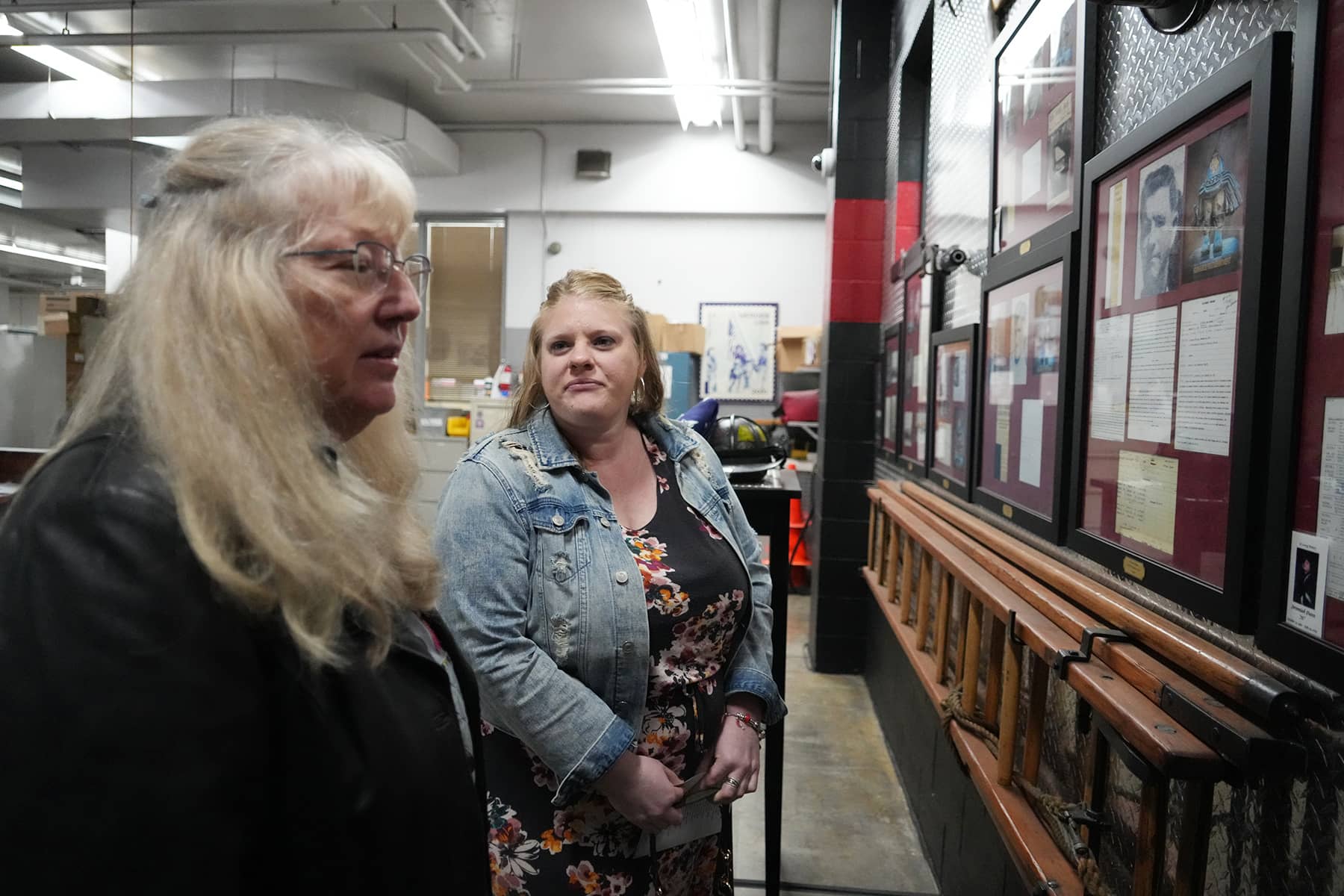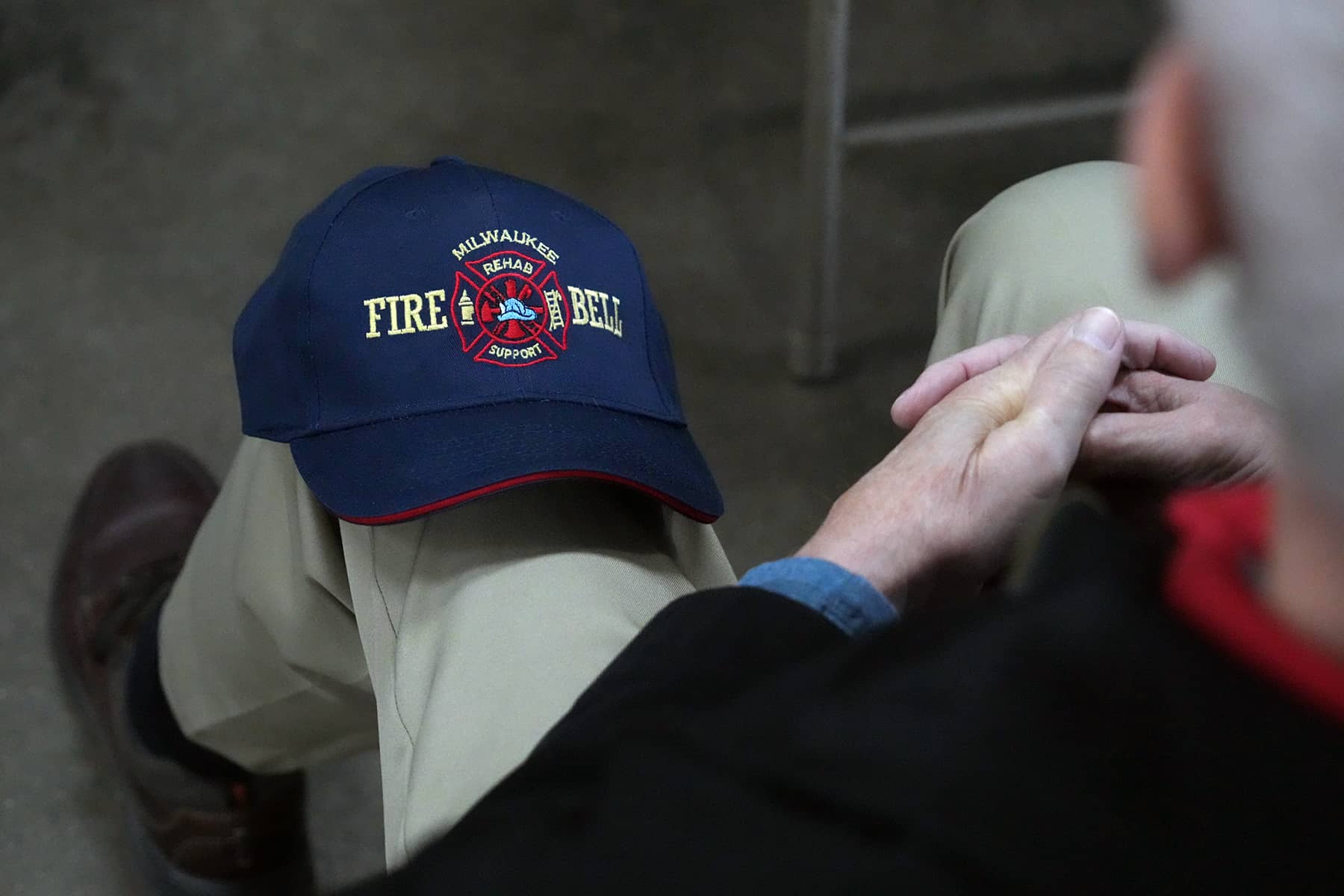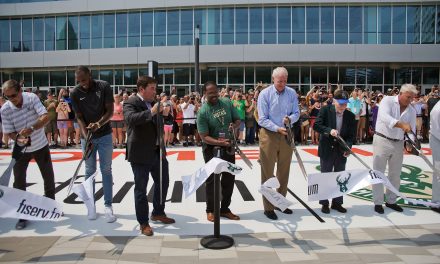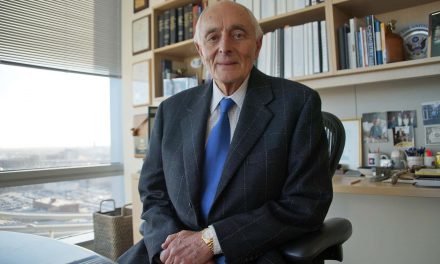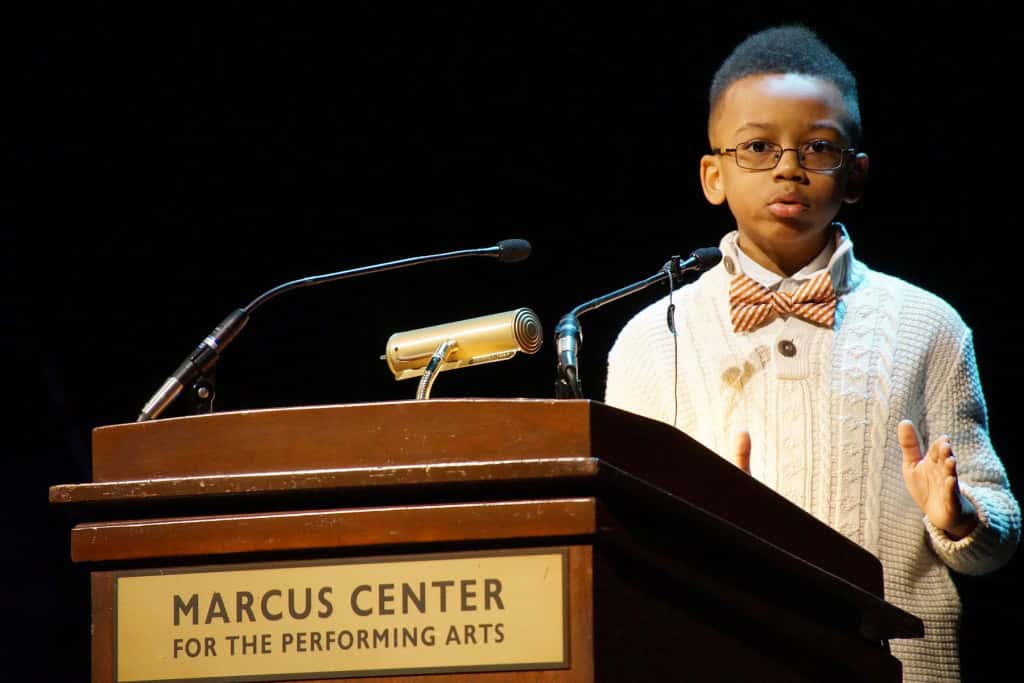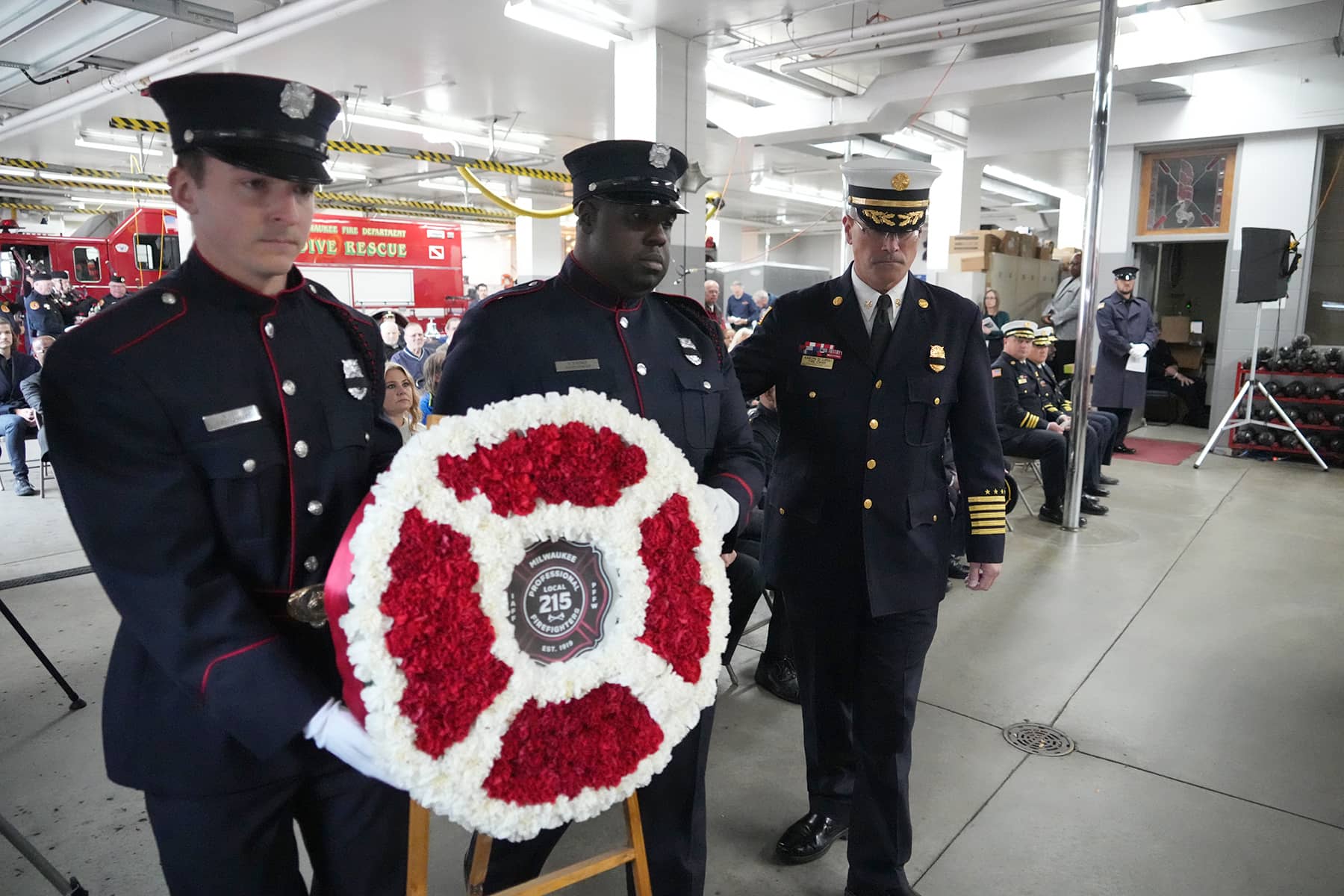
Milwaukee’s annual memorial ceremony to honor its fallen firefighters was held on October 12 at MFD Headquarters Station 2, a solemn tradition observed since 1996 to remember those who were lost performing their duty or as a result of their public service.
Since 1875, members of the Milwaukee Fire Department have protected the lives and property of the citizens in the City of Milwaukee. Concerned citizens originally organized a volunteer firefighting force in 1837. The October 12 ceremony honored all the firefighters who made the ultimate sacrifice in the course of protecting the public.
“For those of us who are privileged to work with or be in the company of firefighters, we have all heard stories that make us catch our breath, swallow our words, or even break our hearts. Stories about something that no one should ever have to experience or witness. And we know that for every story that is shared with us, there are many others that are never told. These stories are kept to protect privacy, to push away despair, to save others from trauma, or perhaps even just so the witness to such events can forget,” said Leon Todd, Executive Director of the Fire and Police Commission.
Between 1860 and 2023, the Milwaukee Fire Department has experienced 143 fatalities over its history. Each of the 143 losses had a story, about who was lost and those left behind.
… One cold morning, many years ago, the phone rang for the wife of a firefighter. When she answered it, she was given the news that her husband was not coming home. He had been sent to a fire unaware of a hidden danger. When the building was remodeled, the correct support structure was not placed under the walls. After firefighters entered, an area collapsed on top of them.
Another day and another wife answered a knock at the door. There was the department chaplain, a fire chief, and the union representative. She was told that her husband suffered a heart attack and had died at the scene of a fire.
Milwaukee Fire Department dispatchers picked up a call and listened to another wife who was terrorized beyond belief. Her husband had succumbed to the brutal mental, emotional, and psychological turmoil of his work as a firefighter and took his own life.
Another wife brought her husband home from the hospital. Doctors had explained that nothing more could be done, they could not cure his cancer. She had to arrange hospice care for his final days …
“As we commemorate the service of those who sacrificed their lives to make their final rescue, I hope that we can find a way to share their stories that will help us heal and find peace,” added Todd. “Stories that remind us that our friends, colleagues, and family members overcame more challenges than most people can imagine. That it was part of who they were, and that they have inspired others they will never know to also answer the call to serve.”
The men and women of Milwaukee’s fire service are confronted with a more dangerous work environment than ever before. They are forced to continually change strategies and tactics to accomplish the task of saving lives and property. To do so often comes at a terrible cost.
“We are losing an increasing number of people to cancer. Here is a fact most people don’t know about filing taxes. When it comes to occupation, and you put ‘firefighter’ on that line, that is a carcinogen. Being a firefighter is a known carcinogen,” said MFD Fire Chief Aaron Lipski. “We suffer cancer at rates far beyond the average public. That’s not a statistical anomaly. That is because your firefighters – every day – willingly walk, crawl, and run into horribly hazardous environments. I’m the luckiest person on the planet because I get to lead the Milwaukee Fire Department in its pursuit to do those things.”
Chief Lipski said that after firefighters return to the station, they clean all their tools. Axes are polished, soot is removed from helmets, dirt from the city streets is wiped from the fire hoses, and blood – the evidence of human tragedy – is washed off the floor of the paramedic unit. But, the most important tool that firefighters use had been neglected for too long.
“We say in the fire service that our number one tool is our brain. And I find that to be very true in my experience,” Chief Lipski added. “That brain should get as much attention as the other gear. As a matter of course, almost as a matter of pride, we discounted the need to even pay attention to it. And I am so grateful to work in a fire department in a city where they are finally saying it’s time we address this. And we’re starting to address it. I’m obviously talking about mental health and wellness in the fire service, EMS, and law enforcement. Because we have seen it take an absolutely horrible toll. And we desperately need to change that.”
Part of the ceremony was dedicated to reading the name of each departed firefighter. The Roll Call of the Fallen began on December 30, 1860 with Truckman Frank Barth and concluded with Fire Paramedic Jeremiah Dunn who passed on July 19 of this year.
The Milwaukee Fire Department’s memorial ceremony was steeped in decades of traditions. It reflected the honor and respect for those who have given so much, and symbolized a brave devotion to their duty.
In the past, as firefighters began their tour of duty, it was the bell that signaled the beginning of that day’s shift. Throughout the day and night, each alarm was sounded by a bell, which summoned the brave souls to fight fires and to place their lives in jeopardy for the good of their fellow citizens. When the fire was out and the alarm had come to an end, it was the bell that signaled to all the completion of their call.
Whenever a firefighter dies in the line of duty, it is marked by a mournful toll of the bell. The October 12 memorial stood as a testament to the deep bond between Milwaukee’s firefighters and the community they serve, ensuring that the legacies of those lost would be remembered.
“The fire helmet atop folded protective cost and empty boots stand larger than life-size as the centerpiece of the Milwaukee Fallen Firefighter Memorial situated in front of historic Engine House #2, representing the history of Fallen Firefighters. On the day of the funeral of a fallen Firefighter, a helmet, coat, and boots are arranged in this manner in front of a firehouse on the route of the funeral cortege. As the procession passes, the assembled Firefighters come to attention for a final salute to their fallen comrade. The empty turnout gear not only represents the missing Firefighter, but also the feelings of loss all Firefighters share with the family and friends of the fallen comrade.” – The Last Alarm
The following day, October 13, also marked 27 years since “The Last Alarm” memorial was installed outside MFD’s headquarters.
“As we mourn and pay tribute to the Milwaukee firefighters who were taken way too soon, we pay respect to the great dangers that come with the job,” said Eric Daun, Local 215 President. “We say a prayer for not only our fallen heroes and their families, but also for every brave Milwaukee firefighter who is making sacrifices today to protect our city and its citizens. We pray for their strength and courage, and that they are able to come home to their loved ones.”
- Courage, Integrity, and Honor: Milwaukee pays tribute to fallen firefighters at special memorial ceremony
- United by loss: Milwaukee veterans and first responders commemorate the 20th anniversary of 9/11
- Honoring Alonzo Robinson: Milwaukee Fire Dept. building named for Wisconsin’s first Black architect
Lee Matz

